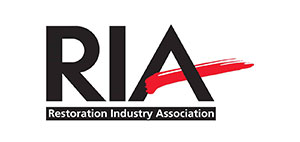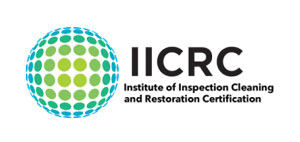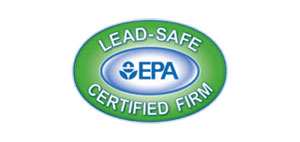After the fire is put out, what’s left behind is more than blackened walls and ceilings. The damage from a fire can hide serious risks. It’s not just about the looks. It can cause structural damage and contents damage. We also have to deal with the smoke damage restoration. This includes getting rid of the bad smell and fighting off mold.
Deciding what to fix first can be really hard. Many things need immediate attention, like burnt wood and water stains. That’s where new and precise cleaning methods like Sponge Media™ come in.
Key Takeaways
- It’s vital to know all about the fire damage types to fix things the right way.
- Damaged buildings might have unsafe parts that need special care.
- Damage to personal and business stuff varies. It impacts how we restore everything.
- To get rid of soot and smells, we use special methods for smoke damage restoration.
- Stopping water damage early helps avoid stains and mold later on.
- Each fire and smoke problem is different. So, fixing them must be customized.
Understanding the Impact of Fire on Structures and Contents
Fire’s destructive power can leave both visible and invisible scars. It impacts the strength of buildings and the state of our personal and business items. Knowing the depth of fire impact is crucial. It helps both property owners and experts plan better for recovery.
Structural damage from fires comes in many forms. It can be minor or severe, affecting the safety and structure of buildings. This damage might show as bent materials or a total collapse of support. Engineers and builders must carefully check and decide how to fix these issues.
- Contents restoration is key after a fire. Items inside, like furniture and electronics, face different levels of ruin. Smoke, heat, and water from putting out the fire all damage these items.
- Fires can severely harm electrical systems too. Bad wiring and broken appliances might risk a new fire. Qualified electricians must check and fix these problems to keep the area safe.
Before starting the contents restoration process, knowing the full impact and damage from the fire is crucial. Dealing with these issues quickly can reduce the total damage. This helps people get back to normal living sooner and lowers repair costs.
Comprehensive Overview of Soot and Smoke Damage
Smoke and soot damage are tricky after-effects of fires. They harm surfaces differently depending on the type of material. Cleaning up after these damages is tough and takes special knowledge.
Smoke can seep into things, leaving awful smells and stains. To tackle this, experts use a method called restorative blasting. It uses Sponge Blasting to clean just the damaged spots without harming the material underneath.
- Soot damage often appears as a powdery layer over things. It can get deep into the material’s pores.
- Smoke damage makes the air bad. It also leaves a sticky, smelly film on surfaces that’s hard to remove without special gear.
- Fire restoration looks at both seen and hidden damage to fully fix the place up.
For a good fire restoration, you need to understand how far the smoke and soot spread. This way, experts can find the best way to clean each space. They consider what the area’s made of, how close to the fire it was, and how well it was ventilated.
The point of all this cleaning and fixing is to make the place safe and comfy again for those living there.
The Often Overlooked Consequences of Water Damage
After a fire, water damage is often sidelined next to the visible harm from flames. Yet, this kind of damage can harm the building’s structure and looks. These effects matter a lot.
In the aftermath of a fire, materials like drywall and wood can get water staining. This not only makes things look bad but can cause bigger problems. If left alone, moisture in these materials can start mold growth. Mold prevention thus becomes key in these cases.
- Material Removal – Sometimes, the best approach is to remove and replace water-damaged materials to prevent further decay and ensure structural safety.
- Spot Cleaning – This method involves targeted cleaning efforts to remove stains and prevent mold growth, especially useful for high-value or hard-to-replace materials.
- Micro-Abrasion – A fine restoration technique that can gently remove surface stains from harder materials like stone or brick without causing additional damage.
Using these methods early helps bring a property back to its previous state. This keeps the area safe and comfortable for those living there. So, knowing how to deal with water damage is crucial for a successful recovery and for stopping mold.
Commercial Property Focus: Types of Fire Risks in Business Settings
Businesses in commercial buildings face many fire risks. These risks can cause serious damage if not handled properly. Knowing these risks is key to avoiding fires and keeping employees safe.
Here are common situations that up the fire danger in business places:
- Cooking fires, especially in restaurants or cafeterias. These are found in many corporate buildings.
- Problems with electrical wiring, which can be from old or not well kept systems.
- Issues with heating units in offices or warehouses.
- Accidents from smoking, even though there are rules against it near businesses.
- Arson, which is setting fires on purpose, is rare but a big risk to life and property.
To fight these threats, companies must focus on fire safety:
- Put in quality smoke alarms and sprinklers. These stop fires from spreading fast.
- Keep up with checking electrical systems, heaters, and other equipment to ensure they work well.
- Teach workers how to spot fire risks and what to do in case of a fire. They need to know how to use fire extinguishers too.
Also, where the business is located matters. For example, places prone to wildfires need special care. This means keeping the area around the building clear of flammable material and using fire-resistant materials in construction. Doing this is a big part of preventing fires.
By learning about and tackling the risks, companies can protect their property and workers. This also helps them bounce back after a fire faster. It keeps their business running smoothly.
Smoke Damage: Types and Restoration Considerations
After a fire, places may suffer from smoke damage in several ways. It’s essential to know these different types to clean and fix them right. Wet smoke and dry smoke are two main types, each needing specific methods to clear.
Wet smoke is from slow, low-heat fires that leave a sticky, hard-to-clean mess. However, dry smoke from hot fires creates a fine, powdery residue. This type is easier to clean but can go deep into items like wood.
- Finding out which smoke type was present is key to choosing the best cleaning approach.
- Experts use special tools like HEPA air scrubbers and ozone generators to remove smoke.
Dealing with smoke damage isn’t simple. Specific steps must be taken, including checking hidden spots for smoke. Making sure no smoke residue is left is crucial to a complete restoration.
- First, a full check is done to see how far the smoke has spread.
- Then, the air is scrubbed clean, and surfaces are treated with special cleaners.
- Finally, stubborn smells are removed with ozone treatments.
To fully restore a place hit by smoke, experts need a solid grasp of smoke types. They use the latest tech and their skills to get the job done. This work brings back the area to its pre-fire state, making it safe and cozy again.
Fire Damage Restoration Steps and Safety Considerations
After a fire, restoring a property is critical. This process involves several restoration steps and sticking to safety measures. Each step aims to restore the place carefully. It makes sure all safety rules are followed too.
To start, a detailed fire damage assessment is done. This looks into the damage thoroughly. It helps in making a detailed plan to fix everything, including what’s not easy to see.
- Safety Measures: The first steps are about making the area safe. This includes checking and securing the building. It also means making sure there are no electrical or chemical dangers.
- Water Extraction and Drying: Tools are used to get rid of leftover water from putting out the fire. Then, special equipment like dehumidifiers and air movers help dry the place.
- Soot and Smoke Residue Cleaning: Techniques like air scrubbing and thermal fogging are used. They remove soot and get rid of smoke smells. This is key for a full cleanup.
- Structural Repairs: Next, any damaged parts are fixed or changed. Sometimes, this work is quite big, depending on how much the fire damaged the building.
- Final Inspection: The last step is a thorough check to make sure everything is okay. It ensures the restored property is safe and good to go back into.
Following these restoration steps makes sure every part of the recovery is handled properly. This way, safety and function are guaranteed in the end.
Conclusion
After a fire, getting your property back in shape takes a lot of skill and attention. They are experts in fixing structural, content, and electrical damage, and getting rid of different smoke types. This brings back the lost safety and security.
Their way of fixing things is thorough and detailed. They start by making sure everyone’s safe. Then, they carefully check and fix everything, from damaged beams to charred walls and electrical lines. Their team is skilled at removing smoke smells, drying out, and cleaning up soot and charring.
It’s key to pick the best fire restoration help for a quick and successful recovery. This combination ensures top-notch restoration, bringing peace to owners after a fire.





